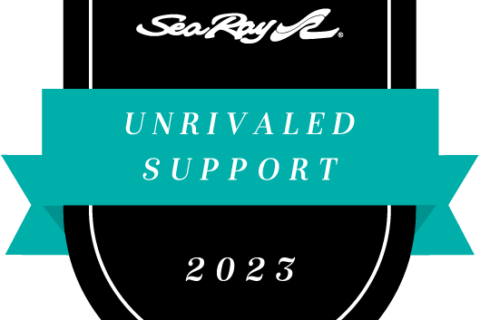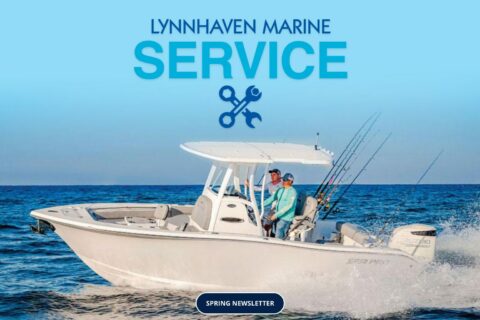On April 1, 2021 a new federal law goes into effect that requires the operator of a boat with an installed ECOS (Engine Cut-off Devices) to wear the ECOS link. The link is usually a coiled bungee cord lanyard clipped onto the operator’s person, PFD or clothing and the other end attached to the cut-off switch, but there are plenty of variations on the market, including electronic wireless devices. The law applies on all “Navigable Waters of the US”.
When an operator is wearing a link while underway, the engine will cut-off if the operator is separated from the operating area, an occurrence that can happen if the operator is ejected from the vessel or falls within the vessel. The shutdown of the engine is essential for safety reasons. If the operator is ejected from the vessel, the shutdown may prevent the operator from impacting the vessel’s spinning propeller, and may aid the operator in safely returning to the drifting vessel.
The law applies to “Covered Recreational vessels” which means any motorized boat with 3 or more horsepower that is less than 26 feet in length and takes effect on April 1, 2021.
Operator Requirement: An individual operating a covered recreational vessel shall use an engine cut-off switch link while operating on plane or above displacement speed.
An earlier law, passed by congress in 2018, required manufactures to install an Emergency Engine Cut-Off Switch (ECOS). The law passed on December 4th 2018, and went into effect 1 year later. Even though it is now a law, most U.S. boat manufacturers have voluntarily installed an ECOS on their boats for decades.
The terms Engine Cut-Off Switch (ECOS) and Engine/Propulsion Cut-Off Devices are used interchangeably to denote a system that disables the propulsion engine when the operator is unexpectedly displaced from the vessel.
Emergency Shutoff Switches Now Required by Law
To be worn by Operator,

Conventional lanyard-style emergency shutoff switches have been around for decades, but most people don’t wear them.
As of April 1 2021, operators of boats shorter than 26’ will be required to use an emergency shutoff switch. The United States Coast Guard will be enforcing a federal law that was passed in 2018.
The law requires that manufacturers of boats 26’ long and shorter with powered by an engine making at least 3 hp equip the vessels with an emergency engine cut-off switch. The switches have been in place on many vessels for decades, but it only became a federal requirement in 2019.
Just Wear It
The overwhelming majority of boats already have an engine cut-off switch, but much like personal flotation devices, compliance has been the primary obstacle to people using them. The National Defense Authorization Act of 2021 now requires anyone who operates a boat shorter than 26’ to use the cut-off link under certain circumstances.
The law states that the switch must be used when the primary helm is not within an enclosed cabin and when the boat is operating on plane or above displacement speed. Some situations where the switch will not be required includes when docking, trailering, trolling and when operating in no-wake zones.
Fell Marine is one of the first makers of wireless remote-style cutoff switches that the user wears on his or her wrist.
An engine shutoff switch can be a lanyard that attaches to the operator with a clip and shuts off the engine if it’s pulled away from an attachment point at the helm. More modern wireless fobs use a wireless link and remotely shuts down the engine when the fob is submerged.
Seven states already have engine cut-off switch laws for boats and 44 have them for personal watercraft.



